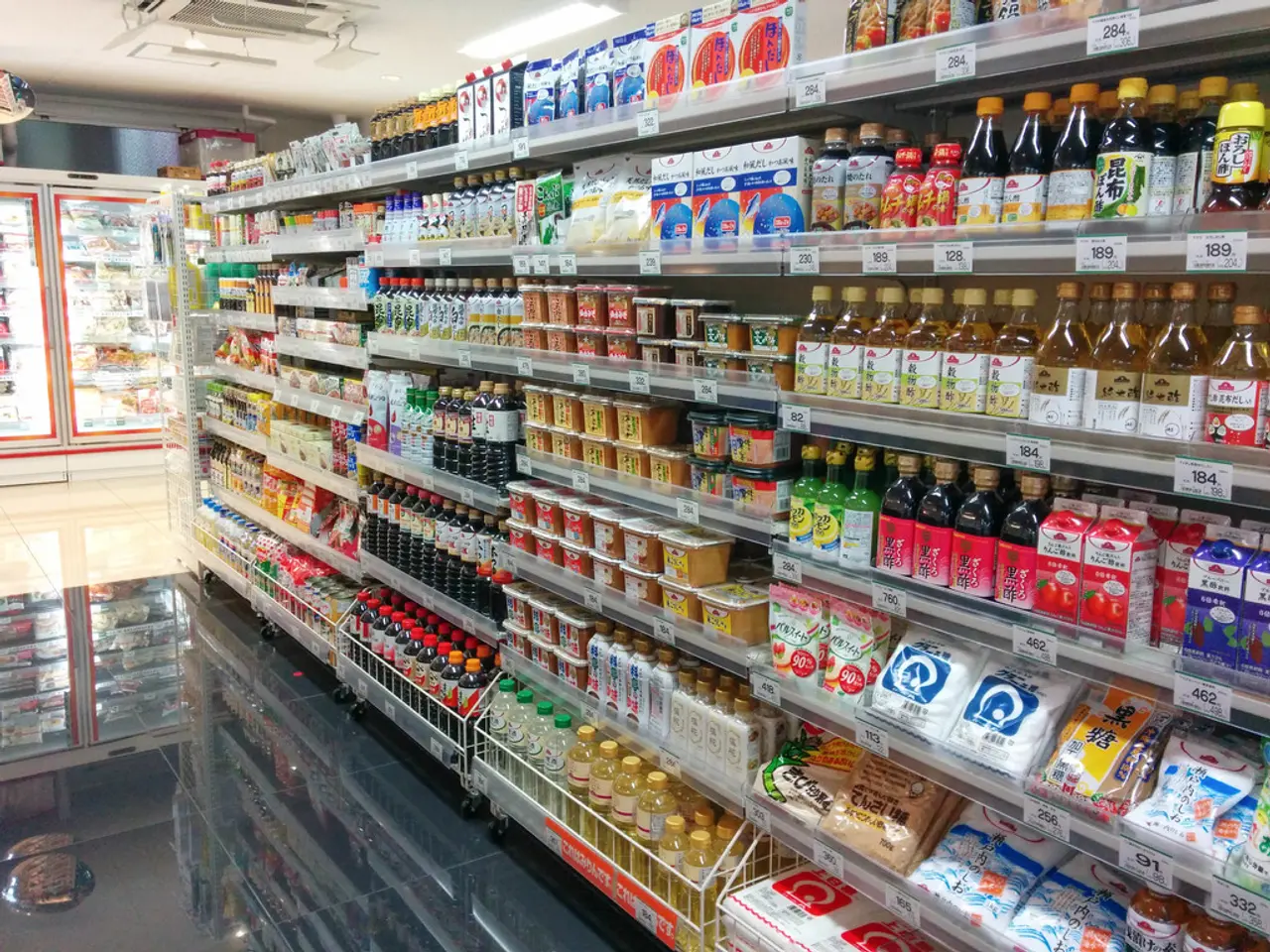Global supply chains have adapted to Trump's tariffs, claiming them as the standard, according to an industry expert.
In the ever-changing landscape of international trade, the Trump administration's tariffs have brought about significant shifts for various industries in the United States. The impact of these tariffs has been particularly evident in sectors such as pharmaceuticals, smartphones, jewelry, textiles, and footwear, causing increased production costs, supply chain disruptions, and pricing uncertainties.
One of the most affected industries is pharmaceuticals, with potential tariffs rising up to 200% by mid- to late-2026. This could significantly increase production costs and regulatory risks, potentially leading to higher drug prices or limited supply. Similarly, industries like smartphones, jewelry, textiles, and footwear—all reliant on complex global supply chains and imported intermediate inputs—are vulnerable to increased tariffs. The manufacturing sector overall is highly exposed, which can lead to wage stagnation or job losses as companies try to offset the tariff-related cost increases.
Iconic American brands in related industries, such as Nike and Gap, have reported steep cost increases from these tariffs, although many have not yet fully passed them on to consumers. However, tightening profit margins may force price hikes in the near term.
Tariffs have also caused cost inflation and supply chain uncertainty across multiple sectors, increasing costs for industries including construction, mining, energy, and repair services. These ripples have been felt in consumer prices, with the average home cost substantially increasing as a result.
However, not all news is negative. Transparent cost data, including tariffs, transportation, labor, and manufacturing capability, empowers smarter sourcing, especially as trade policies remain unsettled. Companies like Fictiv, which offers on-demand procurement services for custom mechanical components for the U.S. manufacturing industry, are adapting to this new environment. Fictiv has production operations in the U.S., China, India, and Mexico, with a total of 400 employees.
In response to the tariffs, manufacturers are increasingly looking to source suppliers in regions closer to home, a trend known as nearshoring. The White House's 35% tariffs on imports from Canada will not be applied to goods that are compliant with the United States-Mexico-Canada Agreement (USMCA). This agreement exempts imported goods from tariffs, providing some relief for U.S. manufacturers.
The Trump administration has imposed new 'reciprocal' tariffs on goods from over 90 U.S. trade partners, but the 90-day extension for negotiations on a long-term trade deal has granted a reprieve for goods from Mexico, with a 25% tariff rate staying in place instead of a 30% levy that would have started on Friday.
Vinny Licata, head of logistics at Fictiv, stated that companies are seeing tariffs as the new normal. He also mentioned that Mexico seems to be managing the negotiations more delicately, whereas Canada has been fairly aggressive with their stance. Licata stated that the tariffs are helping bring some manufacturing back to the U.S., Mexico, and Canada, and that the deals with these countries will help accelerate the trend of nearshoring.
In November 2023, Fictiv opened a production facility in Monterrey, Mexico, to offer more options for on-demand manufacturing services across North America. This move reflects the ongoing nearshoring of manufacturing to the U.S., Mexico, and other parts of the Americas.
As trade policies continue to evolve, it's crucial for manufacturers to keep an eye on "total landed costs," according to Licata, to make informed decisions about their sourcing strategies. The tariffs, while posing challenges, have also presented opportunities for companies to rethink their supply chains and find new ways to compete in the global market.
References:
- Economic Policy Institute
- Brookings Institution
- Congressional Research Service
- The increased tariffs by the Trump administration have not only affected industries like pharmaceuticals and smartphones, but they have also extended to sectors such as general news, as companies grapple with the implications of these policies on their operations and competitive landscape.
- The ongoing tariff-related strategies, including nearshoring, have led to significant changes in the manufacturing sector, with companies like Nike and Fictiv, in various industries, adjusting their supply chains to minimize costs and maintain production, hinting at a shift in general news narratives regarding trade and commerce.







